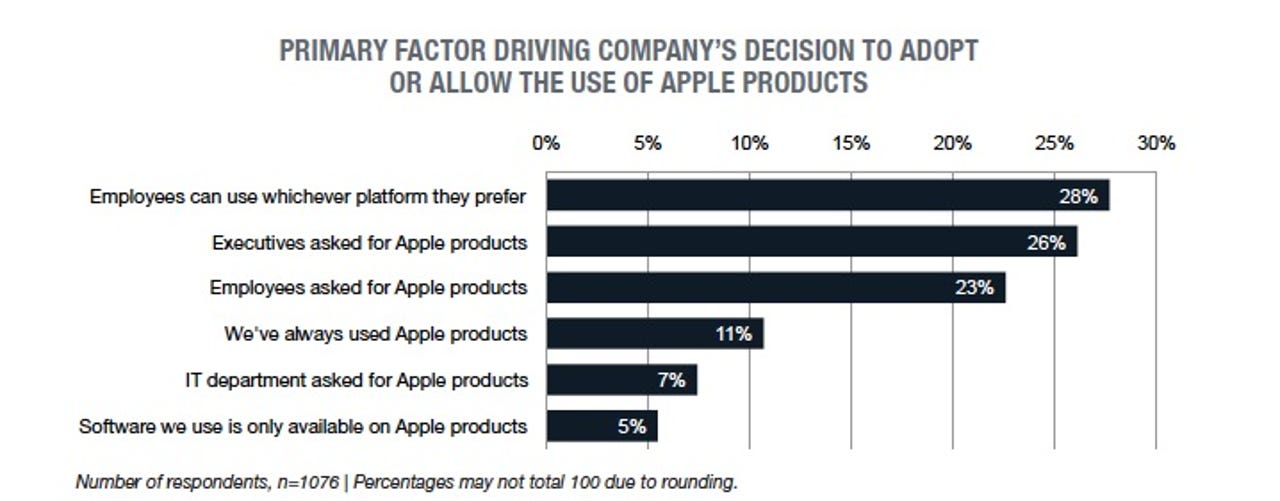Research: Apple products favored by 84 percent in enterprise

Apple was once relegated to consumer use with only a few niche markets using it in business. But the company is now targeting the enterprise, and it's common to see executives using MacBooks, and iPads and iPhones in use on the sales floor. The iMac has also made inroads onto employees' desktops.
Tech Pro Research conducted a survey in April with 1,369 respondents sharing their input on the use of Apple products within the enterprise. (Tech Pro Research is ZDNet's premium-content sister site.) Topics covered in the report, Apple's Growing Role in the Enterprise, include:
- Top industries for Apple usage
- Spending patterns on Apple products
- BYOD usage of Apple products
- Reasons for using/not using Apple products
- Positive outcomes
- Negative outcomes
- Competitors to Apple in the enterprise
Download the full report: Apple's Growing Role in the Enterprise.
Employees request Apple products

Employee demand spurred much of the use of Apple products within the enterprise, with 84 percent of companies saying that they begin purchasing Apple devices, or allowing employees to bring their own devices, because someone with the company requested them or because they wanted to give employees platform freedom to choose whichever one they preferred.
As Jordan Golson wrote in the Tech Pro Research report, Apple's Growing Role in the Enterprise,"with more than half the total being attributed to employee requests, it's likely that employees (whether executives or lower levels) are looking to use the same platform at work as they do at home and making that request of their companies."
Golson said, "For years, Apple has used certain products to entice people into the Apple ecosystem. First it was the iPod, which was the first Apple product for millions. The iPhone got a slow start initially, but really hit its stride with the iPhone 4, which sold tremendously well. The iPad attracted even more first-time Apple buyers."
By introducing products slowly, Apple ended up in the hands of millions of customers that would have been unlikely to start with an expensive Mac notebook or desktop. By exposing customers to the Apple ecosystem with a lower-priced starter product, so to speak, it opened up the possibility of that customer eventually trying other products from Apple.
Positive outcomes from the use of Apple products
A majority of respondents (56%) said that they had positive outcomes from their company's adoption of Apple products. Fewer calls to IT were reported by 32 percent of respondents, and 31 percent said it resulted in reduced training on how to use the technology. Another 23 percent reported longer and cheaper upgrade cycles.
Apple will continue to gain strength in the enterprise according to Tech Pro Research's survey and the subsequent report. It's no longer unusual to see executives and employees pulling out iPhones and iPads in meetings, or with a MacBook or iMac on their desk.
Nevertheless, Golson wrote, "Still, Apple has a long way to go. This is, as they teach in business school, perhaps not a problem but an opportunity to be grabbed. Apple accounts for less than 20 percent of the hardware budget at two-thirds of companies surveyed, and while nearly all companies using Apple products are using its iPhone and iPad portable devices, the pricier Mac is still far behind in adoption."
Overall, Apple prepares well positioned to take advantage of the ongoing changes for enterprise IT departments, according to the report.
Find out more about the survey's findings and download the full report, Apple's Growing Role in the Enterprise.